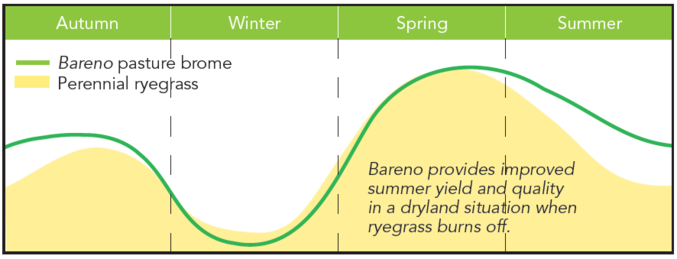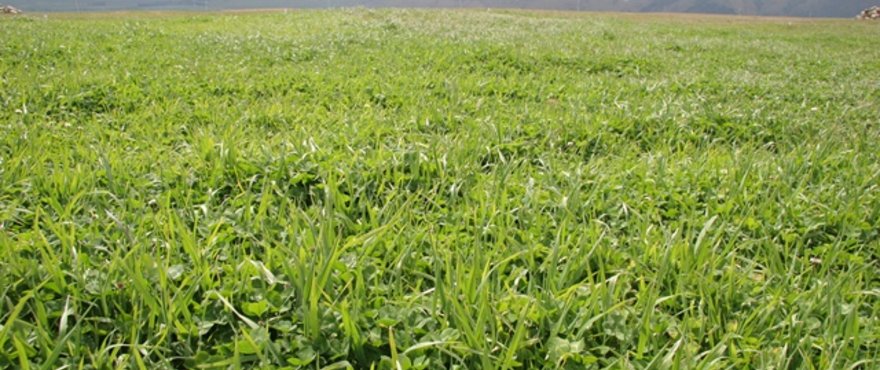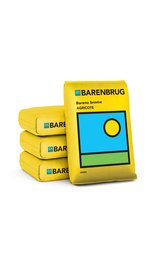Bareno thrives where perennial ryegrass fails, excelling on tough, summer dry sheep
and beef country with free-draining soils.
Flexible
Bareno provides a palatable, persistent and flexible pasture for dryland farming that can tolerate both rotational grazing and set stocking. Bareno's persistence may decline in the upper North Island, so it is less suited to this region.
Highly palatable
A strong feature of Bareno is its palatability through all seasons:
-
It remains palatable, even when seed heads are present, and stays greener and leafier than ryegrass in summer.
- Bareno can support a high legume content (40% sub and white clover has been measured in spring).
High yield
On Lincoln University’s Silverwood Farm, a dryland breeding property in inland Canterbury, Bareno produced 12.5 t DM/ha/year, 9% more than new sowings of perennial ryegrass (11.5 t DM/ha), with excellent spring, summer and autumn growth.
Seasonal growth

Sow early
Brome grasses are slower to establish than ryegrass, so make sure to:
- Sow when warm - soil temperature 12°C+ in late summer or early autumn.
- In dry areas a summer fallow prior to sowing is best practice.
- Direct drilling has proven very successful.
Sowing Bareno




